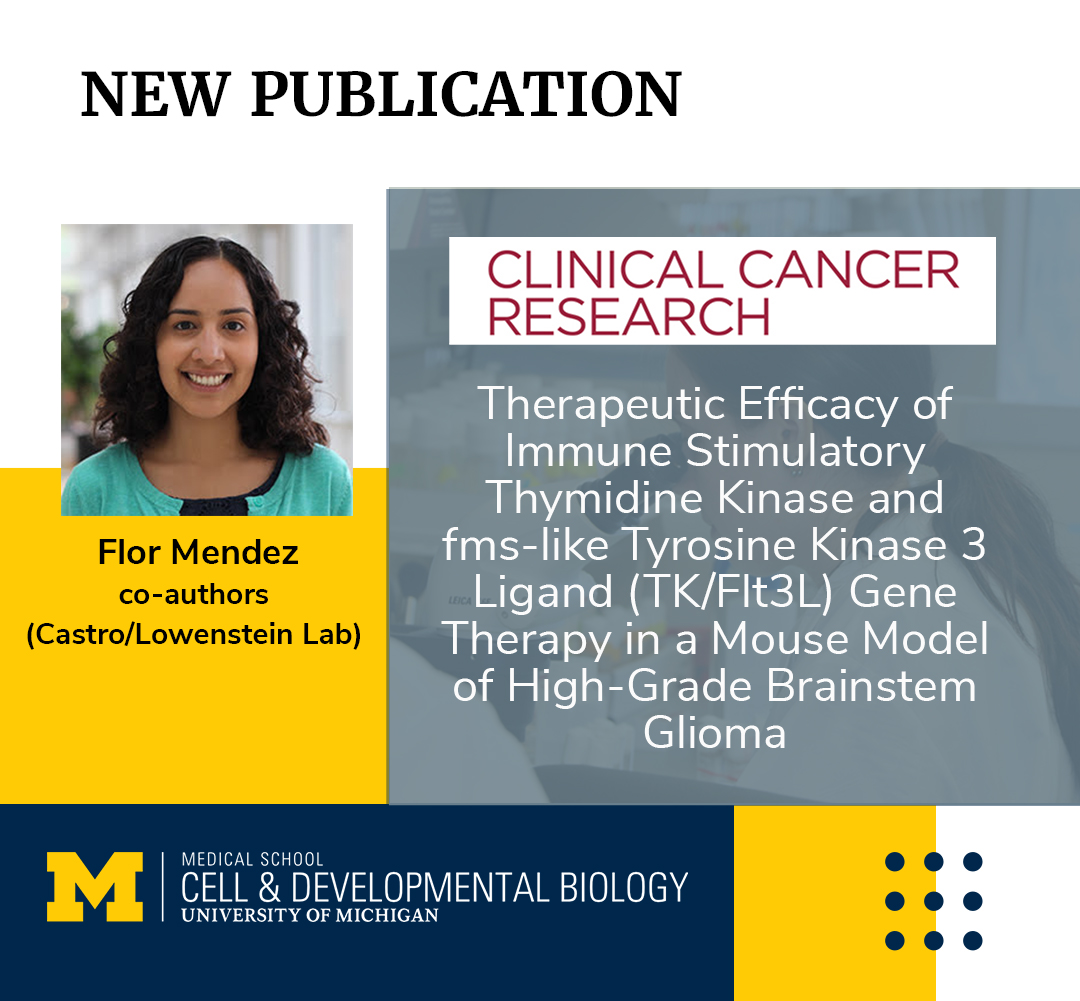
Abstract
Purpose: Diffuse intrinsic pontine glioma (DIPG) bears a dismal prognosis. A genetically engineered brainstem glioma model harboring the recurrent DIPG mutation, Activin A receptor type I (ACVR1)-G328V (mACVR1), was developed for testing an immune-stimulatory gene therapy.
Experimental Design: We utilized the Sleeping Beauty transposase system to generate an endogenous mouse model of mACVR1 brainstem glioma. Histology was used to characterize and validate the model. We performed RNA-sequencing analysis on neurospheres harboring mACVR1. mACVR1 neurospheres were implanted into the pons of immune-competent mice to test the therapeutic efficacy and toxicity of immune-stimulatory gene therapy using adenoviruses expressing thymidine kinase (TK) and fms-like tyrosine kinase 3 ligand (Flt3L). mACVR1 neurospheres expressing the surrogate tumor antigen ovalbumin were generated to investigate whether TK/Flt3L treatment induces the recruitment of tumor antigen–specific T cells.
Results: Histologic analysis of mACVR1 tumors indicates that they are localized in the brainstem and have increased downstream signaling of bone morphogenetic pathway as demonstrated by increased phospho-smad1/5 and Id1 levels. Transcriptome analysis of mACVR1 neurosphere identified an increase in the TGFβ signaling pathway and the regulation of cell differentiation. Adenoviral delivery of TK/Flt3L in mice bearing brainstem gliomas resulted in antitumor immunity, recruitment of antitumor-specific T cells, and increased median survival (MS).
Conclusions: This study provides insights into the phenotype and function of the tumor immune microenvironment in a mouse model of brainstem glioma harboring mACVR1. Immune-stimulatory gene therapy targeting the hosts' antitumor immune response inhibits tumor progression and increases MS of mice bearing mACVR1 tumors.
